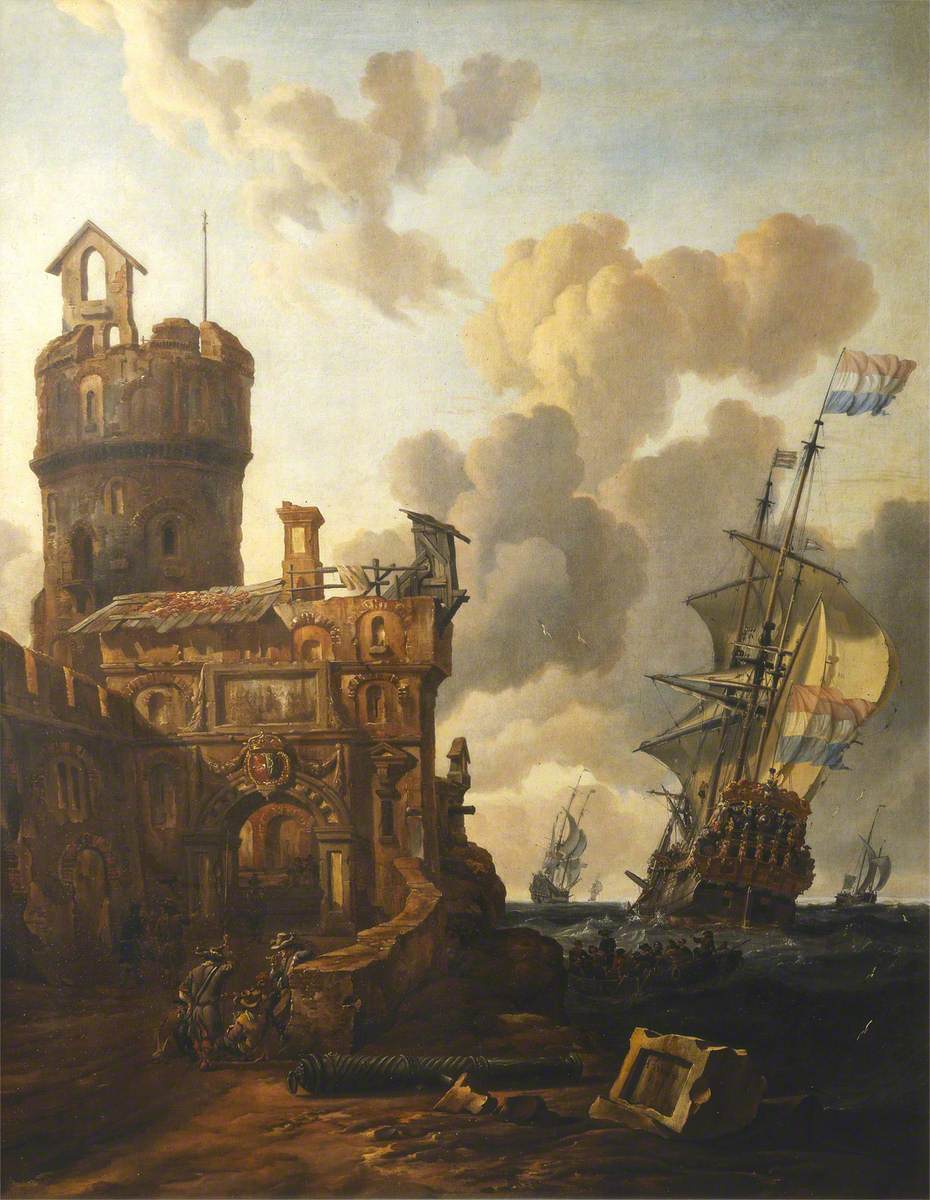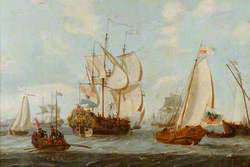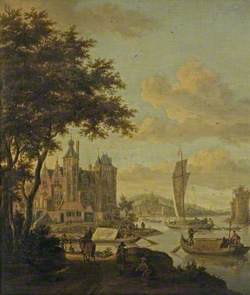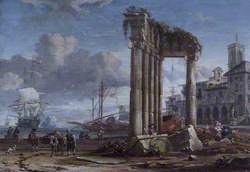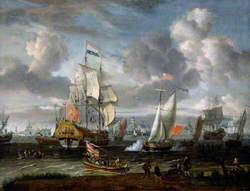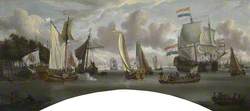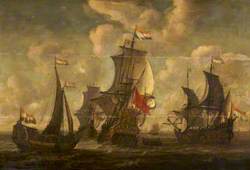How you can use this image
This image can be used for non-commercial research or private study purposes, and other UK exceptions to copyright permitted to users based in the United Kingdom under the Copyright, Designs and Patents Act 1988, as amended and revised. Any other type of use will need to be cleared with the rights holder(s).
Review the copyright credit lines that are located underneath the image, as these indicate who manages the copyright (©) within the artwork, and the photographic rights within the image.
The collection that owns the artwork may have more information on their own website about permitted uses and image licensing options.
Review our guidance pages which explain how you can reuse images, how to credit an image and how to find images in the public domain or with a Creative Commons licence available.
Notes
Add or edit a note on this artwork that only you can see. You can find notes again by going to the ‘Notes’ section of your account.
Abraham Storck was one of several Dutch marine painters who produced fantastical views of Mediterranean ports during the second half of the seventeenth century. Merchant shipping appears alongside architectural ruins, usually depicted in the crystal-clear colours of Italian art of the period. In this scene of a Dutch ship passing a port, however, the artist, who has signed his upright format on a block of stone in the right foreground, has adopted a colour scheme of golden browns and ochres. The composition is very clear-cut. The rugged, partly ruined classicist architecture built on a cliff takes up the entire left half of the picture space. Here, the spectator’s gaze is led uphill along a city wall and through a gate towards a massive round tower behind it.
The view opens to the sea in the right half of the composition. The Dutch ship is seen just off stern, its masts rising up almost to the height of the tower. Further ships are depicted in the distance. A strong breeze has risen and a fully occupied rowing boat is carefully struggling across the waves in the shade underneath the cliff. The scene is dramatically lit from the left, increasing the theatrical effect of the painting.
Such paintings anticipated the popular eighteenth-century Italian capriccio. Storck probably never went to Italy himself, but he would have known Italian scenery and architectural prints and other artists’ paintings. He showed considerable accuracy in depicting ships' rigging and technical details and great skill depicting the human figure, through characterisation and attention to costume and detail. The staffage figures are given an air of ‘banditti’ character, romanticising the foreign scene, if not contrasting it to the Dutch prosperity represented in the leaving ships.
Title
A Dutch Ship Passing a Fort
Date
late 17th C
Medium
oil on canvas
Measurements
H 86.4 x W 68.58 cm
Accession number
BHC0928
Work type
Painting
